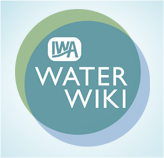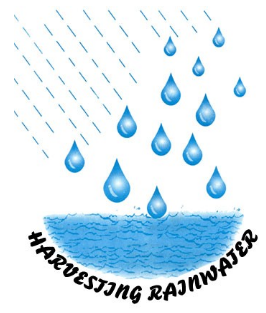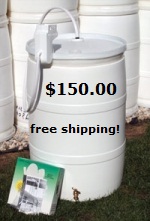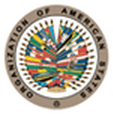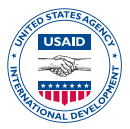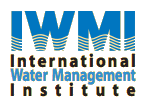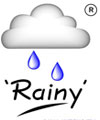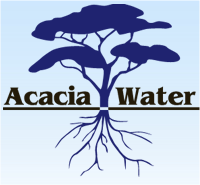Difference between revisions of "Rainwater harvesting sources"
From Akvopedia
(Published from sandbox) |
|||
| Line 1: | Line 1: | ||
<font size="3" color="#0c477b">'''INFO HUBS OR TOOLS'''</font> | <font size="3" color="#0c477b">'''INFO HUBS OR TOOLS'''</font> | ||
| − | {| style="border: 2px solid # | + | {| style="border: 2px solid #DB87C9" cellpadding="10" cellspacing="0" |
! style="background:#efefef;" width="30%" | <font color="#0c477b">Organization</font> | ! style="background:#efefef;" width="30%" | <font color="#0c477b">Organization</font> | ||
! style="background:#dcdcdc" width="70%" | <font color="#0c477b">Description</font> | ! style="background:#dcdcdc" width="70%" | <font color="#0c477b">Description</font> | ||
Revision as of 19:27, 22 September 2014
INFO HUBS OR TOOLS
| Organization | Description |
|---|---|
| IWA WaterWiki | The IWA WaterWiki aims to provide a platform for the global water community to interact and share knowledge online. The site will be a reference for all areas of water, wastewater and environmental science and management. This is the place for water professionals worldwide to interact, share knowledge and increase understanding. |
| Madhya Pradesh Pollution Control Board | System of collection rainwater and conserving for future needs has traditionally been practiced in India. The traditional systems were time-tested wisdom of not only appropriate technology of Rainwater Harvesting, but also water management systems, where conservation of water was the prime concern... systems were Bawaries, step wells, jhiries, lakes, tanks etc. These were the water storage bodies to domestic and irrigation demands. People were themselves responsible for maintenance to water sources and optimal use of water that could fulfill their needs. |
| Amsha Africa Foundation | Amsha Africa Foundation is investing in rainwater harvesting technology that is low cost, simple to deploy and maintain, and able to transform the lives of households, communities and countries Africa-wide. In dry parts of Africa, a lot of water is lost as surface runoff. There are many ways to harvest and store rainwater. Harvesting this runoff and storing it in reservoirs such as water pans or underground tanks makes it available for use when required. This Action Sheet explains how communities can build and harvest the rainwater that falls on their land for use in farming. |
| Rainwaterharvesting.org | The Centre for Science and Environment (CSE) is a public interest research and advocacy organisation based in New Delhi. CSE researches into, lobbies for and communicates the urgency of development that is both sustainable and equitable. View our Runoff Calculator, FAQ on RWH, Technical Helpline, Groundwater Map, Rainfall Data, and more... |
| SSWM Water Sources | Tools for rainwater harvesting, including all aspects of a project implementation. |
| The Global Development Research Center | Harvesting, conserving and managing rainwater, which includes online rainwater harvesting resources plus organizations in the field and articles. |
| Teca | Rainwater syringe: Low cost technology for rainwater harvesting in coastal areas. The method developed by Mr Antoji from Kerala, India is a cost effective method for harvesting rainwater in coastal areas. He has installed more than 150 tanks in different parts of Kerala including in his home village of ‘chellanum’ in Ernamkulam district. He started the construction of tanks in wide scale from 2000 onwards. |
| Rain-barrel.net | Rainwater Harvesting Guide: several articles & instructions. Also a rain barrel manufacturer. |
| Infonet-biovision.org | Rainwater Harvesting: general ways to collect water for drinking, for livestock or irrigation. |
LESSONS FROM THE FIELD
| Organization | Description |
|---|---|
| UNEP Division of Technology, Industry and Economics | Rainwater Harvesting And Utilisation. An Environmentally Sound Approach for Sustainable Urban Water Management: An Introductory Guide for Decision-Makers. Rainwater harvesting examples from around the world. |
| Water4Everyone | Stories where Water4Everyone helps to implement rainwater harvesting. Videos included. |
| The EcoTipping Points Project | Water Warriors: Rainwater Harvesting to Replenish Underground Water (Rajasthan, India) |
| National Geographic | Lessons From the Field—Rainwater Harvesting in India. How will vast regions of India, where highly unreliable rainfall makes the difference between famine and sustenance, cope with climate change? Over 85 percent of the cultivated area in this country is either directly dependent on rain or depends on rain to recharge its groundwater. |
| Centre for Science and Environment | A look at India's water harvesting practices. Water has been harvested in India since antiquity, with our ancestors perfecting the art of water management. Many water harvesting structures and water conveyance systems specific to the eco-regions and culture has been developed. |
| Organization of American States | Rainwater harvesting in Honduras. Domestic use, agricultural use (irrigation and animal drinking troughs), extent of use, operation and maintenance, level of involvement, costs, effectiveness of the technology, suitability, advantages, disadvantages, future development of the technology. |
| Organization of American States | Underground dams in Brazil. Technical description, site selection, topographic survey, construction of the wall, extent of use, operation and maintenance, level of involvement, costs, effectiveness of the technology, suitability, advantages, disadvantages, further development of the technology. |
HOW-TO PUBLICATIONS
| Organization | Description |
|---|---|
| Practical Action | Rainwater Harvesting, 12 page manual. |
| UNEP - United Nations Environment Programme | Rainwater harvesting: a lifeline for human well-being. PDF, 2009. Approx. 70 pages. |
| USAID | Roof-Top Rainwater Harvesting Best Practices Guide: Design and construction plus community ownership and policies. |
| CGIAR and WaterNet | Rainwater Harvesting Technologies for Small Scale Rainfed Agriculture in Arid and Semi-arid Areas. N Ibraimo, P Munguambe. Department of Rural Engineering, Faculty of Agronomy and Forestry Engineering, University Eduardo Mondlane. February 2007. |
| International Water Management Institute (IWMI) | Rainwater Harvesting Technologies in the Sahelian Zone of West Africa and the Potential for Outscaling. Working Paper 126. B. Barry, A.O. Olaleye, R. Zougmoré and D. Fatondji. |
| African Development Bank | Rainwater Harvesting Handbook : Assessment of Best Practises and Experience in Water Harvesting |
| D5Z on Slideshare | India: Rainwater Harvesting, Conservation and Management Strategies for Urban and Rural Sectors. 170 pages. |
| Government of India | Rainwater Harvesting and Conservation: Manual. 83 pages. Includes rooftop, tanks and recharge structures. |
| Study | Effects of rainwater-harvesting-induced artificial recharge on the groundwater of wells in Rajasthan, India. John M. Stiefel & Assefa M. Melesse & Michael E. McClain & René M. Price & Elizabeth P. Anderson & Narendra K. Chauhan. |
| IDFC | Rainwater Harvesting for Irrigation in India Potential, Action, and Performance. Vasant P. Gandhi and Vaibhav Bhamoriya. 2011. |
| Practical Action | Run Off Rainwater Harvesting, the Path to Enhanced Livelihoods |
| UNESCO | Rain Water Harvesting, Conservation and Management Strategies for Urban and Rural Sectors. Dr. R. K. Sivanappan. National Seminar on Rainwater Harvesting and Water Management, 2006. |
| Water Alternatives | Demystifying 'Tradition': The Politics of Rainwater Harvesting in Rural Rajasthan, India. Saurabh Gupta Institute for Agricultural Economics and Social Sciences in the Tropics and Sub-Tropics, University of Hohenheim, Germany. |
| Centre for Development and Environment (CDE) | Water Harvesting: Guidelines to Good Practice. Floodwater, macro & micro catchment, rooftop & courtyard harvesting. |
NGOs, COMPANIES AND SERVICES
| Organization | Description |
|---|---|
| Varsha-Jal | Patented KFP Rainwater Harvesting Technique - solution that can match to the size of problem and that too in a lowest of cost. |
| Rainwater for Humanity | Harvesting clean, potable water in Kerala, India. Rainwater for Humanity aims to deliver potable rainwater to rural communities sustainably, reliably, and collaboratively. We prioritize local involvement, tailored solutions, and above all, a long-lasting source of clean potable water. |
| Tizagenix Pty (ltd) Use-Rainwater.com |
Our company install Rainwater Harvesting Systems. We specialize in the engineering design and installation of rainwater systems for households, factories and offices. Our engineering team will design, calculate, size and install a system to meet our customers' requirements. |
| The Mvula Trust | In 2008/2009, Mvula Trust received funding for a rainwater harvesting project as part of the Department of Water Affairs’ CSO Programme. This rainwater harvesting project built on, and assisted with, previous and current rainwater harvesting projects that focused on food security. Through this project, the dimension of sustainable livelihoods was added. |
| African Conservation Trust | Gardens & rainwater harvesting for schools. Helping to provide food security, biodiversity conservation, natural resource management, and heritage conservation. |
| Rainy Filters | Commercial RH filters in India. ‘RAINY’ R Dual Intensity Rainwater Harvesting Filter™ is the result of over 10 years Continuous R&D done by the team of FARMLAND RAINWATER HARVESTING SYSTEM, by studying the pattern of rainfall in rural and urban India, intensity of rainfall, type of houses, pipeline used for rainwater outlets, re utilization, recharging of groundwater and Tube well etc. |
| Smithsonian | Rebuilding Rainwater Collection in India. From one conservationist's perspective, harvesting rainwater doesn't necessarily mean high-tech strategies — traditional techniques have been around for centuries. |
| IndiaMart | Rain Water Harvesting System from India. Over 300 suppliers. |
| International Rainwater Harvesting Alliance (IRHA) | In partnership with the most eminent organisations and individuals in the field, the IRHA provides a lobbying and advocacy platform for RWH. It supports the growth of RWH solutions to water supply problems. It also provides a forum for its members to work together or share experiences, and thus for the benefit of people living with water scarcity. |
| Rural Water Supply Network (RWSN) | The Rural Water Supply Network (RWSN) is the global network of professionals and practitioners working to raise standards of knowledge and evidence, technical and professional competence, practice and policy in rural water supply and so fulfil the vision of sustainable rural water services for all. RWSN places a very strong emphasis on innovation, documentation, research and capacity building. |
| World Agroforestry Centre | The Centre’s vision is a rural transformation in the developing world as smallholder households strategically increase their use of trees in agricultural landscapes to improve their food security, nutrition, income, health, shelter, social cohesion, energy resources and environmental sustainability. The Centre’s mission is to generate science-based knowledge about the diverse roles that trees play in agricultural landscapes, and to use its research to advance policies and practices, and their implementation, that benefit the poor and the environment. |
| Spate Irrigation Network | THE SPATE IRRIGATION NETWORK is a network of spate irrigation professionals and practitioners. The network stimulates the development of programmes of implementation that improve the livelihoods of those in spate irrigation areas, exchanges experiences and good practices, helps upgrade training, identify priority fields for improvement and research and development. |
| Helvetas Swiss Intercooperation | HELVETAS Swiss Intercooperation’s offers services in five different fields of development work: Water and Infrastructure; Environment and Climate Change; Rural Economy, Skills Development and Education; Governance and Peace. |
| Acacia Water | Acacia Water is a leading supplier of practical advices regarding groundwater challenges. The added value is hidden in freshness, motivation, common sense, personal commitment, reliability, focus on solutions and the ability to connect and switch. From parcel to world scale, Acacia delivers international services for clients like governments, private sector, and NGOs. |
| Aqua for All | Aqua for All is a foundation dedicated to fulfilling the needs of the poorest people in the world, the people with less than $4 a day, the so called Base of the Pyramid (BoP). Our purpose is to steadily increase the number of people with access to clean water and adequate sanitation on a sustainable base. Aqua for All acts as a networking agent, connecting public and private organizations, mobilizing resources, expertise and finances from the Dutch water sector towards development projects focused on water and sanitation. |
